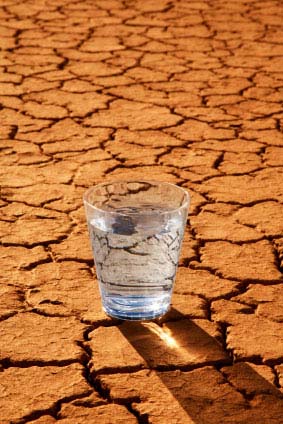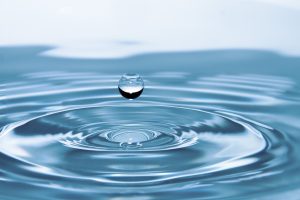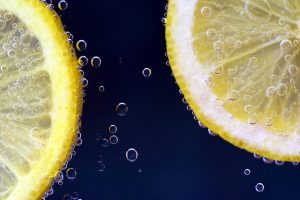Ionized water, often referred to as structured water, offers a powerful hydration solution for our bodies. Unlike regular tap water, which is composed of large clusters of molecules, ionized water undergoes a transformation that makes it super-hydrating and more effective at cleansing our systems. Through the ionization process, the molecular clusters in water are reorganized, making them smaller and more easily absorbed by the body’s cells. Let’s dive into how structured water works and why it’s considered the superior choice for hydration and detoxification.
What Makes Ionized Water Super-Hydrating?
Water, in its natural state, is made up of clusters of molecules rather than individual molecules. Tap water, which is pressurized through pipes, typically contains large clusters of 12 to 14 molecules. However, the ionization process breaks down these clusters into much smaller groups of 5 to 6 molecules. This smaller cluster size allows the water to penetrate cells more efficiently, providing quicker and deeper hydration.
The restructuring of water can also occur through mechanical means, such as vortexing or magnetization. But when water is both restructured and ionized, it becomes exceptionally effective at dissolving and eliminating toxins and waste that have accumulated in the body over time. The result? A form of water that offers better hydration and detoxification than regular tap or bottled water.
What Is Hexagonal Water?
Hexagonal water refers to water molecules that are arranged in hexagon-shaped clusters, which scientists believe are the most beneficial for biological organisms. This structure is naturally found in environments like snowflakes, and research shows that organisms, including humans, thrive on this type of water.
Hexagonal water forms a liquid-crystalline network that plays a crucial role in cellular communication, water movement within cells, enzymatic functions, and many other metabolic processes. Studies have shown that the presence of hexagonal water in the body is inversely correlated with aging—meaning the more hexagonal water you have, the younger and healthier your cells tend to be.
Healthy cells are typically surrounded by hexagonal water, while unhealthy or abnormal cells are often surrounded by disorganized or unstructured water. In contrast to the large, disorganized clusters found in tap or bottled water, hexagonal water’s smaller, organized clusters can penetrate the cells much more easily, reducing the energy the body needs to restructure the water for absorption.
The Benefits of Hexagonal Water
- Superior Cellular Hydration
Hexagonal water’s smaller molecular clusters allow it to move more rapidly through cellular membranes, providing faster, deeper hydration. This results in better tissue hydration and improved cellular function. Many people experience an immediate energy boost after drinking hexagonal water, thanks to its rapid absorption and hydrating power. - Efficient Nutrient Delivery
Hexagonal water is the preferred water for all biological organisms. Its unique structure interfaces seamlessly with the body’s cells, helping to transport vitamins, minerals, and other nutrients more effectively into the cells. This superior assimilation means that the nutrients from your diet or supplements are more readily available for the body to use. Enhanced Detoxification
Water plays a key role in flushing out toxins and metabolic waste from the body. Hexagonal water is particularly effective at dissolving and eliminating these wastes through the lymphatic system. Many users notice improvements in detoxification within just a few days of drinking hexagonal water, as it helps cleanse the body of toxins stored in the cells.
Why Tap and Bottled Water Fall Short
The water we typically consume—whether from the tap or bottled—often consists of large, disorganized molecular clusters. These larger clusters are formed due to external pressures, such as the force exerted by water pipes and pumps. Because of their size and structure, these clusters are too large to pass freely through cellular membranes, meaning your body has to work hard to break them down before they can be absorbed. This process takes up valuable energy and time that could be better spent on other essential functions.

You’re thirsty!
Water is undoubtedly the most important nutrient we need, yet it is also the one most often overlooked. While a deficiency in other nutrients can be sustained for months or even years, a person can only survive a few days without water. In fact, scientists rank water second only to oxygen for sustaining life.
About 60% of our total body mass and 80% of our brain is made up of water. Water plays a crucial role in all bodily functions and is the main component of all the blood circulating in our body, transporting oxygen to our cells, muscles, and organs. It is a universal solvent for biochemical reactions, lubricates joints, delivers nutrients, eliminates waste, disperses heat, and regulates temperature.
Yet, many people are so dehydrated that they fall ill. In his book Your Body’s Many Cries for Water, Dr. F. Batmanghelidj claims that many diseases can be attributed to chronic dehydration. He states that drinking sufficient amounts of water, our most important nutrient, can completely resolve several of these health problems.
When we don’t drink enough water, our bodily processes slow down, electrolytes and other nutrients cannot be properly transported, cellular functions decline, heat loss becomes difficult, and waste and toxins are not effectively eliminated by the kidneys. This can lead to a harmful buildup of waste over time.




